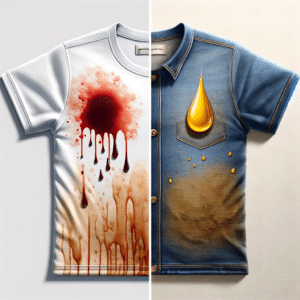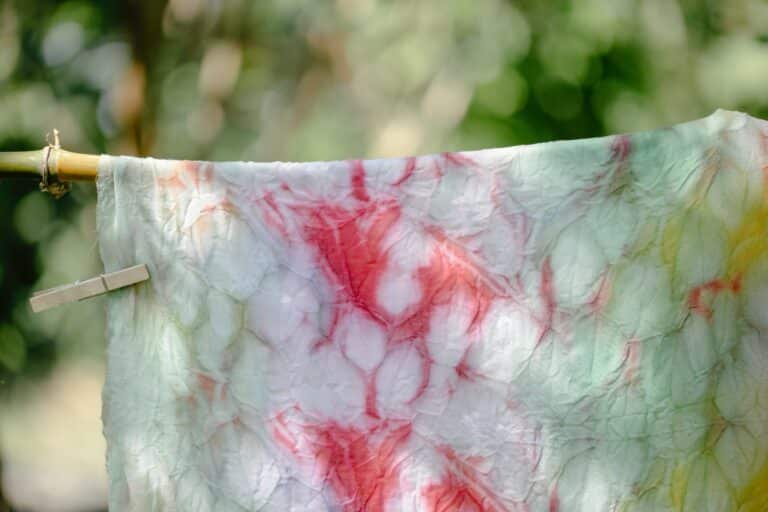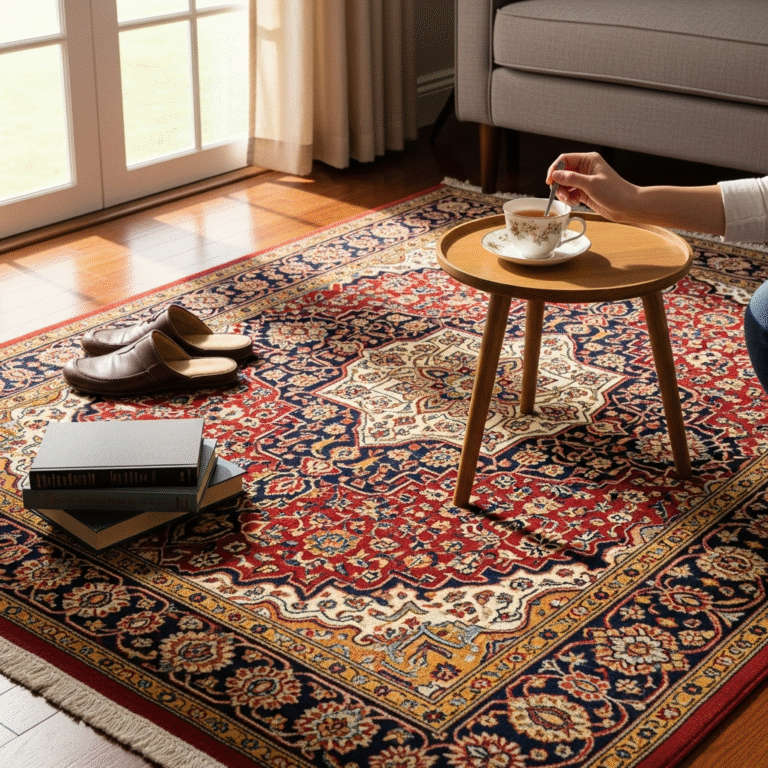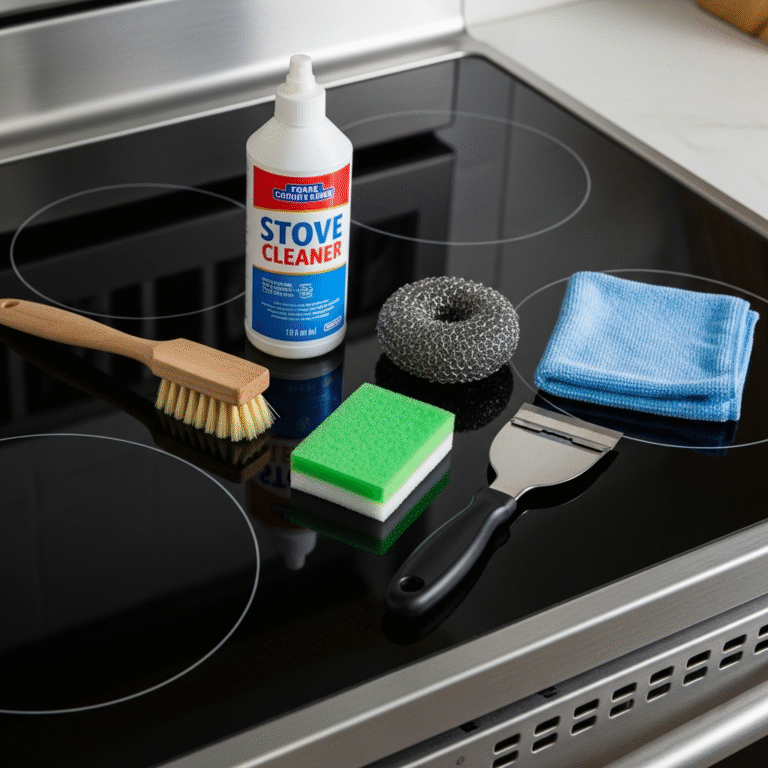Hey Toronto! Ever found yourself staring at a stubborn clothing stains, wondering if it’s time to bid it farewell? Well, don’t toss it in the giveaway pile just yet! I’m here to guide you through the surprisingly simple world of removing those pesky stains. Trust me, it’s easier than trying to find a parking spot downtown during a Leafs game!
1. Act Fast
What’s happening at this very second is a bit like a mini-battle. The longer the stain sits there, the more it sinks into the fibers, making itself right at home. Think of it like a guest who pops by uninvited and then decides to stay on your couch forever. Not cool, right?
So, when you act fast, what you’re really doing is stopping that stain from getting too comfortable. Dabbing the area with water, or even seltzer if it’s handy (a neat trick for certain stains like red wine), helps in two ways. First, it dilutes the stain, making it less intense. Second, it keeps the stain from drying out. A dry stain is like a stain that’s signed a lease on your clothes – much harder to evict!
Remember, you don’t always have to launch into a full-scale laundry assault. Sometimes, a simple dab with a wet cloth, or even a baby wipe (a lifesaver for on-the-go stain emergencies) can be enough to keep the stain from setting in before you have the chance to properly treat it.
2. Identify the Culprit
Different stains have different compositions and react differently to cleaning agents. For example, let’s say you’ve got a coffee stain. Coffee is a tannin-based stain, so it’s best treated with hot water and a bit of detergent. On the other hand, if you’ve spilled red wine (another common party culprit), it’s also a tannin stain, but it loves to be treated with cold water and salt or club soda before you wash it.
Now, for the more challenging ones: protein-based stains, like blood or sweat. These can be a bit more stubborn. Cold water is your friend here, as hot water can actually set these stains further into the fabric. For these, a gentle detergent and cold water are your go-to tools.
Grease stains – think butter, oil, or makeup – are a whole other ball game. These guys are slick and slippery and tend to laugh in the face of water-based cleaners. For these, you might need to pre-treat with a degreaser or a dish soap that’s designed to break down oils. Gently work it into the stain before washing.
Ink, paint, and dye stains each have their own set of rules. Ink might respond well to rubbing alcohol or nail polish remover (acetone), while paint might need a specialized cleaner depending on whether it’s water, oil, or acrylic-based.

3. Gentle Dabbing, Not Rubbing
Rubbing a stain can feel satisfying, like you’re really getting in there and dealing with the problem. But, this is actually counterproductive. When you rub a fabric, especially one that’s already compromised by a stain, you’re risking two things: spreading the stain further and damaging the fabric.
Imagine you drop some ink on a sponge and then press down on it – the ink spreads, right? The same happens with your clothes. Rubbing a stain can cause it to spread out and seep deeper into the fibers, making it even more challenging to remove. Plus, if you’re dealing with delicate fabrics, rubbing can break down the fibers and lead to wear and tear, or worse, create a hole. Definitely not what you want!
That’s where gentle dabbing comes in. By dabbing the stain with a clean, absorbent cloth or paper towel, you’re applying just enough pressure to soak up the offending substance without pushing it deeper into the fabric. It’s a bit like patting something dry gently rather than scrubbing it with a towel.
If you’re using a cleaning solution, here’s a pro tip: apply the solution to the cloth, not directly onto the stain. This gives you more control over how much product you’re using and where it’s going. Dab gently from the outside of the stain moving inwards. This technique helps to contain the stain and prevents it from spreading outward.
This gentle approach is kinder to your clothes and more effective in the long run. It’s all about patience and precision – think of it as a gentle dance rather than a wrestling match with your clothing.
4. The Right Cleaner for the Right Stain
For organic stains, which include most food and drink spills, a mild detergent is usually your best bet. These detergents are designed to break down organic compounds, making them perfect for tackling anything from spaghetti sauce to coffee spills. They’re gentle on fabrics but tough on stains, a winning combination for your everyday laundry mishaps.
But what about those really stubborn stains? We’re talking about the ones that make you think your favorite shirt is a goner – like ink from a leaky pen or that foundation smudge on your collar. These stains are a tougher enemy and need a stronger weapon. This is where things like rubbing alcohol or specialized stain removers come into play.
Rubbing alcohol is fantastic for ink stains. It helps to dissolve the ink, making it easier to wash out. Just apply a small amount to a cotton ball or cloth and gently dab at the stain. For makeup, especially oil-based products like foundation or lipstick, a stain remover that’s designed to tackle grease can be your best friend.
However, and this is super important, always do a spot test first. Find a little hidden corner of the garment and apply your cleaner. This is like a mini-trial run to make sure the cleaner isn’t going to do more harm than good. The last thing you want is to turn a small stain into a large, discolored patch!
Each type of cleaner has its own set of instructions, so be sure to read them carefully. Some may need to be left on the stain for a certain period, while others should be rinsed off immediately. And remember, if the first attempt doesn’t fully remove the stain, it’s often worth trying a second time before giving up.
5. Rinse and Repeat if Necessary
Rinsing with cold water is key. Why cold water, you ask? Well, it helps in washing away the loosened particles of the stain without setting them further into the fabric, which hot water might do, especially with protein-based stains like blood or milk. Cold water is gentle yet effective, making it the perfect choice for this stage.
As you rinse, you’re essentially flushing out the remnants of both the stain and the cleaning agent. It’s like telling the stain, “Okay, party’s over, time to leave.” But here’s the thing – sometimes, the stain is a bit stubborn. It might not vanish on the first go. And that’s perfectly okay.
If the stain is still visible after rinsing, don’t throw in the towel (or your stained garment). It’s time for round two. Reapply your cleaner, following the same steps as before. This isn’t admitting defeat; it’s more like reinforcing your attack. Some stains, especially the older or more set-in ones, might need a few attempts to fully disappear.
If the stain is still clinging on for dear life? Well, sometimes you have to know when to call in the pros. For those super stubborn stains, or if you’re dealing with delicate or special fabrics, it might be best to take the item to a professional cleaner.

Clothing Stains Banned
Stains, no matter how daunting they seem, don’t have to be the end of your favorite outfit. With the right approach and a little know-how, you can conquer even the most stubborn spots. The key is to act quickly, use the appropriate treatment, and tackle the stain with patience and persistence. Each stain is unique, and understanding how to deal with different types can save you a lot of frustration (and clothes!). Remember, the sooner you address the stain, the better your chances of removing it completely. And while some stains can be handled at home with basic supplies, others might require a bit more expertise.
But let’s face it, life gets busy, and sometimes dealing with stains can be more hassle than it’s worth, especially when you’re juggling work, family, and other commitments. Maybe you’re dealing with a particularly stubborn stain, or you simply don’t have the time to treat it properly. That’s where Toronto Shine Cleaning comes in. We’re not just about removing stains; we’re about giving you back your time and peace of mind. Our team of cleaning experts has seen it all and cleaned it all, from the everyday coffee spill to the more challenging red wine disaster. We use professional-grade products and techniques to get your clothes looking as good as new.
When you choose Toronto Shine Cleaning, you’re not just getting a cleaning service; you’re getting a partner in your home’s upkeep. Our range of services extends beyond just tackling tough stains. We offer comprehensive cleaning solutions that cater to all your needs, whether it’s regular house cleaning, deep cleaning, or specialized services like post-renovation clean-ups.



















